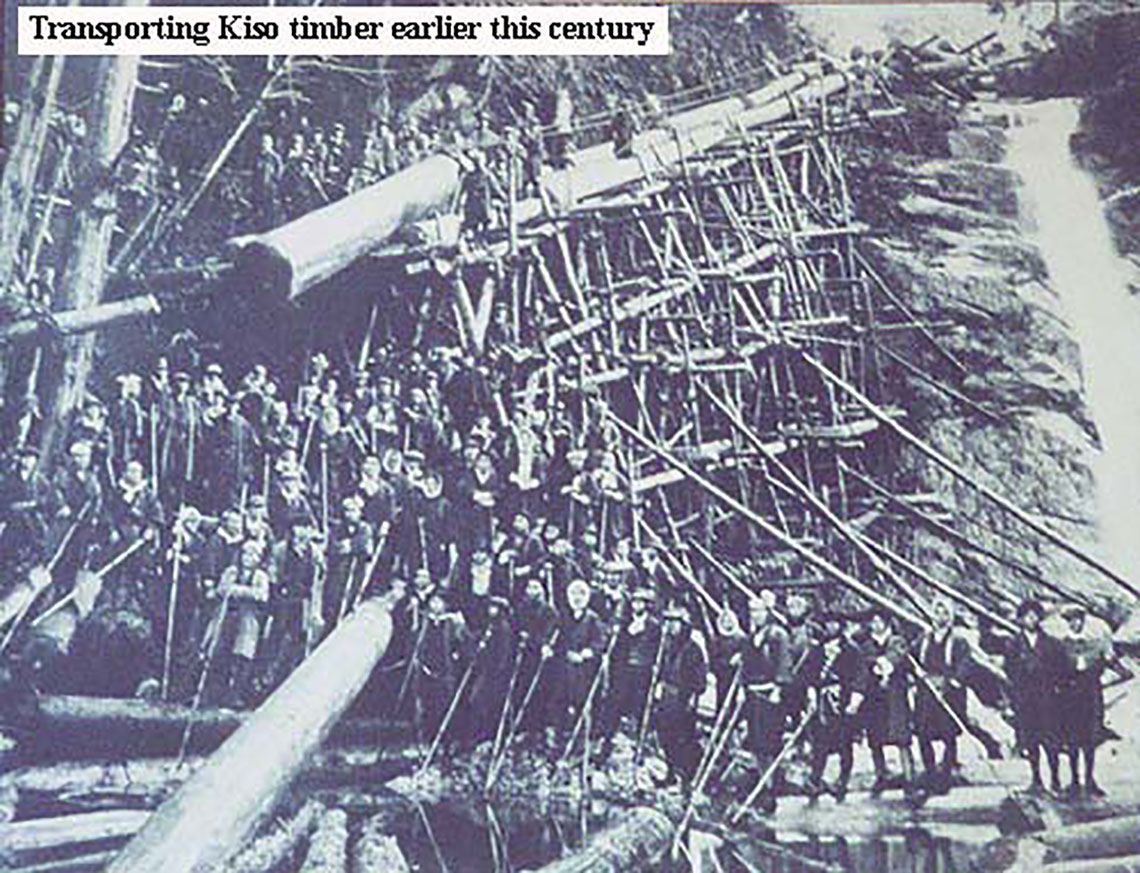The Ise Shrines are a Shinto establishment dedicated to the goddess Amaterasu Omikami who is the mythological ancestor of the imperial family. Ise Shrine was originally reserved for worship only by the imperial family and their priests. With the sharp decline in the power of the imperial court after the start of the Warring States period, however, rigid exclusion was impossible to enforce and the shrine was opened to the public. Subsequently, it became a popular place to visit on a pilgrimage, particularly in the later Edo period when travel in the form of tourism but under the guise of pilgrimage became very popular. In the late Edo period and in the modern period after 1868, the prestige of the imperial family has risen because of the close identification of the modern state and the emperor. Accordingly, visits to Ise Shrine have also become even more popular.
Ise Shrine contains an Inner Shrine and an Outer Shrine. The Inner Shrine contains the sacred mirror which represents Amaterasu. The exact date when the shrine was built is placed back into the legendary period of the 3rd century in the early histories. The architecture of the shrine specifies construction with bare Japanese cypress wood in a style prohibited elsewhere. The Outer Shrine is similar in construction to the Inner except in some minor details. It enshrines Toyouke Daijin, the god of housing, food, and clothes; Shinto theology has it that Toyouke tended to Amaterasu’s food. Worship at the shrines is precisely prescribed, using specific products from specific places. Rice is grown within the shrine’s compound and is used for offerings and for making sake which is also used for offerings.

The two shrines were rebuilt every twenty years on adjacent sites, although turmoil sometimes prevented this. Since the early Edo period, the time period was changed to every twenty-one years: the next reconstruction will be in 1994. When the shrines are rebuilt, strict rituals are followed in the felling, transport and preparation of the cypress required. The area around O-tsumago had the honor early in this century. Women, held to be a source of ritual pollution, were banned from being anywhere close to the logging operation which traditionally utilized timber from the Kiso Valley.
The idea of making a pilgrimage to Ise was avidly promoted by low-ranking shrine priests during the Warring States period. Normal sources of funding were exhausted due to the impoverished state of the imperial court, so priests circulated through the countryside advocating donations and pilgrimages to the shrine. They maintained that seven pilgrimages to Ise would ensure salvation (a Buddhist idea which was very popular at the time); peasants formed associations to help finance an occasional trip by one of their members. By the time Oda Nobunaga was hegemon in Japan toward the end of the period, he felt obliged to make substantial donations to Ise and the Tokugawa shogunate provided funds on a regular basis. In the middle of the Edo period, the numbers of pilgrims could be astonishing in an auspicious year. From April to May, 1705, more than 3.5 million pilgrims came and in April to August, 1771, 2.7 million were recorded. By 1830, the trip was so popular that over 4.5 million visited from late March to August. The shrines are still popular today especially for tour groups who arrive in dozens of buses daily.

